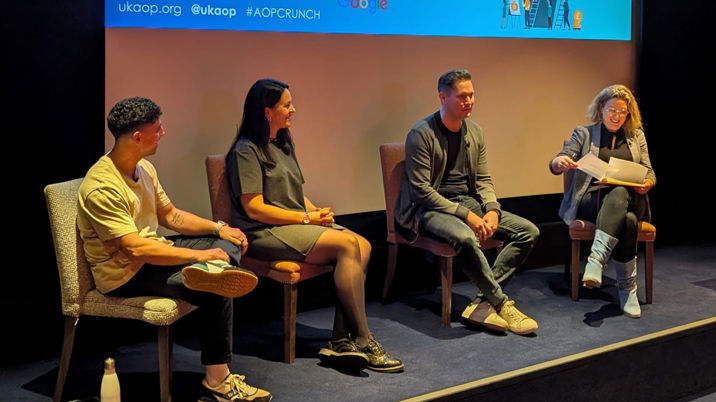
In the final AOP CRUNCH of the year, we gathered the best and brightest from across the publishing world to discuss how to break down barriers and restructure revenue streams to build more resilient and profitable organisations.
Condé Nast’s all-in-one video CMS gives production power to its star brands
In the face of declining pre-roll CPMs and YouTube revenues, Condé Nast overhauled its video strategy to better leverage its owned and operated channels and vast library of content across its portfolio of brands. Video production and products once sat within its in-house Condé Nast Entertainment agency, but now each of its brands takes ownership of their own video content, improving alignment with their broader editorial strategy. But while responsibility for video production was portioned out across its publishing brands, Condé Nast’s backend was unified, bringing its 200,000+ video assets under one roof.
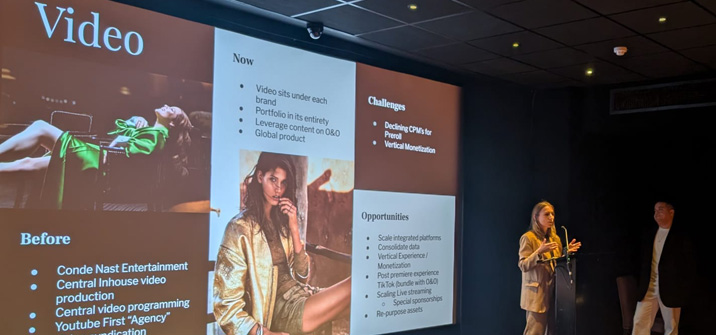
“One of the unsung heroes we have within the video product team is our [in-house] video CMS,” said Cecilie Vernon Nørsgaard, Condé Nast’s senior product manager for global video; “... It is a full video distribution platform which I call a one stop shop for everything video. You can upload videos, you can edit, add pre rolls, add metadata, and — most important of all — add endpoints. You can schedule every single video and send it off to the different distribution points we have added. Now, we have YouTube, Facebook, TikTok, OTT partners, and everything else in here. So, for our video ops team, they only have to log into one CMS, and from there do their entire programming.”
This unified and well-connected CMS was particularly useful during the Met Gala, when video teams at Vogue could extract clips from its live stream in real time, edit them within the CMS, and immediately distribute them across social channels and on-site editorial content.
Like many publishers, Vogue has been pursuing a subscription strategy. Exclusive videos are a core benefit of the Vogue Club membership, through which the brand has cultivated a sense of intimacy with its star editors.
“We film everything handheld and tactile, which is code for low budget and shot on mobile,” said Joris Hendrik Groenendaal, director of consumer revenue video and Vogue Club video programming at Condé Nast. “We use handheld shots to create a closer, more intimate feel that resonates with our audience. Think of me holding up my phone, filming my blazer [up close] so that you can see its texture, and I’m telling you, this is what you should buy. This approach enhances your connection with viewers, it allows them to experience the product without being in the room, without having that physical touch.”
Thanks to shoppable video, Vogue Club members can also buy items presented by its editors or guests, bringing convenience to viewers and affiliate revenues to Vogue. In ‘The Tip Off’ — one of Vogue Club’s exclusive video series — a Vogue editor demonstrates a curated fashion edit while product cards sync up to what’s on screen so viewers can shop the look directly from the video, as well as through links in the accompanying article.
How Covatic helped Sky expand its reach without sacrificing control
The Sky Publisher Player syndicates the publisher’s exclusive Sky Sports content across more than 250 websites. It was developed to increase the reach and viewership of content that was previously locked behind a paywall, without sacrificing control of distribution. To monetise audiences effectively across third-party sites where Sky wouldn’t have access to logins, IDs, or cookies, Sky Publisher Player deploys first-party contextual audiences in partnership with Covatic, and worked with Google to ensure its audience segments would be recognised in the open marketplace.
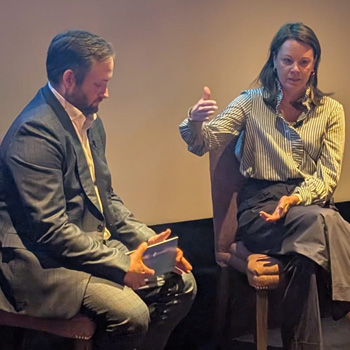
“Because we own all the data, if an advertiser wants to pay five pounds for their media, we actually see that five pounds and can control all the system costs in between that as well,” said Elizabeth Corbin, Sky’s head of advanced advertising. “There’s no [intermediary] cut. There’s a normal agency cut, but we control the system-to-system integration, so we retain a better margin because we know exactly what our systems costs are, what the advertiser is willing to pay, and the agency costs in general. It gives us more control of our overall pricing structure, as well as what we can retain and do for the business.”
With addressability and segmentation sorted, the next hurdle is measurement, a common challenge for cookieless and ID-less solutions. Nick Pinks, co-founder and CEO of Covatic, believes this will be solved when the buy-side integrates and realises the full scope of data connectivity available to them: “A data-driven strategy means utilising data to understand it’s not about having a discrete identifier every single step of the way. That’s only scratching the surface of what data can bring to the equation. Having the ability on the big agency side to understand who is utilising their purchasing funnel, married up in the same way on the publisher side, that’s where the answers appear. If you target a particular audience demographic effectively, and then you see that audience demographic in the sales funnel jumping during the campaign, there’s a relationship there. And that’s all part of the measurement story we’re seeing unfold.”
Joined up priorities, data, and teams are future-proofing publisher strategies
In the first panel of the day, representatives from The Telegraph, Gumtree, and Hello! discussed the various ways that a joined-up approach has affected their revenue strategies, advertising products, and team cohesion.
For The Telegraph, it was the launch of its subscription strategy that brought a renewed sense of unification to the company behind the scenes.

“When we were an ad-first business, there was a tension with advertising being seen as a compromise to the editorial experience,” said Anthony Crocker, director of commercial success strategy at The Telegraph. “What the subscription strategy did was give us a single focal point, making sure that we were doing everything we could across every point of the business to drive subscriptions and keep subscribers on board. It released a lot of the tension, and it meant some big changes to the way that we deliver advertising. We massively reduced our ad ratio, taking away a lot of the code that was slowing the page down. It was all done for the right reasons and, ultimately, that led to better attention quality so we could expect higher yields.”
Navbir Dhillon, head of advertising at Gumtree, described how the company leverages its data to join up the interests of users and advertisers in a way that benefits both parties, as part of the company’s broader shift from indirect to direct revenues: “If I’m a user and I’m selling my car, there’s a high chance I’m buying a new car. Or if I’m selling furniture, there’s a chance I’m either moving home or doing some kind of renovations in the house. We link that consumer journey up with advertisers directly. For example, one of our partnerships is with Confused.com. Pretty obvious: you’re buying a car, you’re selling a car, and then you’re looking to buy an insurance policy. Instead of just having a display ad campaign, we offer more of a strategic partnership, where we’re passing the car VRM number and providing a tailored quote as part of that experience. Providing advertising that is useful for the user is a key piece of that journey.”
Hello! magazine is a publisher that spins many plates, from its significant print presence to its website, app, podcasts, social channels, and various subscription offerings. For Alex Kirby, revenue operations director at Hello!, breaking down data silos and surfacing user journey insights has been key to maintaining long-term, audience-focused vision and strategy when there are so many overlapping and sometimes competing internal interests.
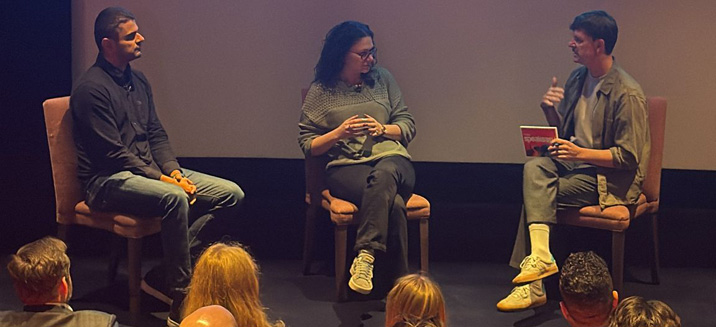
“It’s a constant feedback loop because you want to have all the different teams in your business involved and engaged,” said Kirby. “Having that data to understand exactly what’s happening, how [products are] resonating, what’s working, what’s not, and being able to iterate your strategies going forward means a smoother process. Especially for [products] that can be quite difficult to launch; when you’re trying to get loads of different teams involved and you’re trying to get investment for something that might not make a return for a bit of time. And it’s understanding what those returns are, even outside of just a pure commercial element.”
The carrot and the stick of media sustainability
Ad Net Zero’s Global Media Sustainability Framework (GMSF) provides the advertising industry with a set of standards for reducing greenhouse gas emissions across the media ecosystem. Importantly for publishers, GMSF clearly separates which emissions are the responsibility of publishers versus advertisers and agencies, rather than solely relying on publisher data as a proxy for total emissions throughout the supply chain.
With the onus now more evenly spread, Claire Gleeson-Landry, head of investment and sustainable media at Good-Loop, shared her advice on reducing media emissions and the financial and performance incentives for doing so: “For those clients that are still cautious about prioritising sustainability, it’s worth noting that when you start measuring emissions, you start to see the inefficiencies — and those inefficiencies ultimately equate to money. So, if you’re able to talk to clients about how they can better invest their media budgets and their working media budgets, while still prioritising the planet, that’s only a good thing. Emissions measurement should be table stakes for absolutely every brand and every publisher in terms of just knowing what your house is doing ...
“If you have brands that are doing the work, it makes sense that they will want to invest in publishers that are also doing the work. When publishers get it right, they’re prioritising their users which, in turn, improves things for advertisers ... So, measurement is an absolute minimum. Just as every brand and every publisher would do in terms of brand safety and in terms of viewability, carbon should be another hygiene factor to make sure you are being super efficient, because it does ultimately lead to savings and better investment of revenue.”
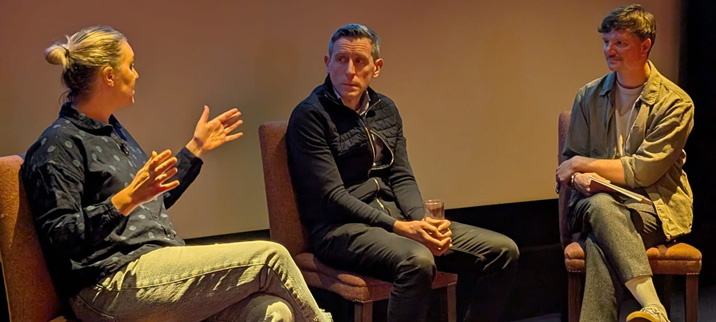
Gleeson-Landry’s incentives for media decarbonisation efforts come at a time when the EU’s Corporate Sustainability Reporting Directive (CSRD) is being tightened; obligating large and listed companies that operate in the EU to share detailed ESG reports. As a result, Oliver Deane, co-founder of The GoodNet, is seeing advertising — which has so far slipped under the radar of ESG reporting — come under far greater scrutiny.
“I would implore you to look through any of your big advertisers’ ESG reports,” said Deane. “Regulation or not, it’s quite surprising how little our industry features, given its focus on consumerism. Regulators are saying that advertisers need to report the material impact of what they’re doing. So, if your ads are going nowhere or are funding bot traffic or misinformation and disinformation, the view of the ESG people — those completely removed from our industry — is that you’ll definitely end up in the firing line.
“And you can see the penny drop as they realise, ‘that invisible money I spend on the internet for advertising has an impact.’ And we’re starting to see a lot of the CSR and ESG professionals that have traditionally been at arm’s length from marketing really look at our supply chain, and figure it out.”
A new era for Mail Metro Media’s video, audience, and data strategies
In response to changing media consumption habits, Mail Metro Media made significant investments in video across on-site, social media, and a new long-form content initiative.
Ben Nachman, video growth lead, shared how an expansion of Mail Metro Media’s video editorial team resulted in 85% of articles now featuring video content. On social media, Mail Metro Media’s efforts have secured them the position of top news publisher on TikTok, where they have 21 million followers. The newly launched Daily Mail Global Studio is dedicated to premium long-form video, as consumption patterns show a bifurcation in attention between short and long-form, with the middle falling away.
Nachman attributes Mail Metro Media’s success on TikTok to its new generation of content journalists, blending traditional journalistic skills with digital fluency, with an average age of just 23.
Tracy Middleton, head of media and entertainment, pioneered an expansion of Mail Metro Media’s gaming content. Audience analysis revealed 13 million gamers across its properties, yet other than the occasional review around a major launch, this audience was not being served and was going elsewhere for gaming content.
Middleton pursued a social-first strategy, and Mail Metro Media’s dedicated TikTok channel has accrued 265,000 followers since its launch in February. So far, Mail Metro Media has secured more than half a million pounds in gaming revenue, primarily from endemic gaming and technology brands rather than the FMCG brands Middleton expected would want to target this audience.
Mail Metro Media harnesses over 200 billion data signals across its properties. Dave Randall, head of performance and data, discussed how, rather than overwhelm clients with this incredible volume, Mail Metro Media simplifies its data offerings into six core products, ranging from broad demographic targeting to highly specific custom segmentation. This allows advertisers to choose from pre-defined packages or request bespoke, managed solutions.
“If you do your setup and planning correctly with data, then the insights and KPIs at the end of it are much better,” said Randall. “If you know that your campaign is about brand uplift, tell us that, because we’ve got the data points to show us how to do this in the best way. We’re optimising user data, not just serving user data. I think that’s key. We can offer advertisers insights into cost per download, as well as how to measure brand uplift. It’s not just who you target, but how you target and what your results are at the end.”
Randall emphasised that data points are people, but people are more than their data points. To better represent its audience, Mail Metro Media pursues a holistic approach that breaks data out of its silos and blends its user data with polls, eCommerce, and strategic partnerships to create a 360-view of its audiences that can be served to advertisers in meaningful ways.












